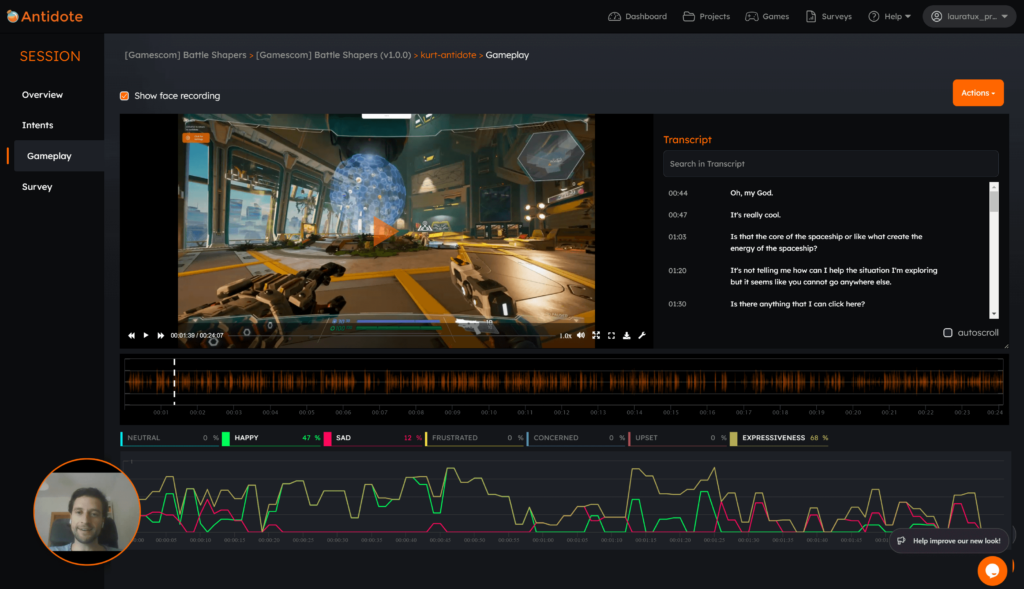Here’s a question for you:
How do you measure the ROI of preventing a disaster before it happens?
I ask this because even today, many game devs treat playtesting and user research as an afterthought or skip it altogether. If you’re a researcher reading this, you know exactly what I’m talking about.
You’ve probably sat in meetings where someone dismissed your work as “nice to have” while the development budget got allocated to everything else.
This frustrates me because I’ve watched talented developers pour years of their lives into projects that could have been incredible successes, only to launch to lukewarm reception because they never really understood what players wanted.
So let’s discuss this to help prevent situations like this in the future.
The Stories We Tell Ourselves
The resistance to playtesting usually comes down to a few common misconceptions that I hear over and over again.
"I'm an expert, I know what players will like"

Absolutely, you are an expert.
You understand game mechanics, balance, technical constraints and design principles better than most people ever will. But (and the big but) being an expert in making games doesn’t automatically make you an expert in what every type of player enjoys.
I’ve been playing games for many years and I still get surprised by player reactions. What I think is an obvious tutorial might confuse newcomers. What I find challenging might feel impossible to casual players. What I consider a minor annoyance might be a deal-breaker for someone else.
Unless you deeply understand your specific target players, you won’t fully know what resonates with them. And understanding players isn’t something you can assume or guess at.
It requires actually letting them play and listening to what they say.
"It's enough to do this internally with the team, friends and family"
Internal testing is definitely a good start and I’m not suggesting you skip it. Your team will catch obvious bugs, your friends might notice confusing elements and your family can give you honest opinions about whether something is fun.
But internal testing can’t give you unbiased reactions from people who don’t know what you’re trying to achieve. When your colleague plays your game, they know you spent three weeks perfecting that boss fight. When your friend tests a level, they’re aware of how much you care about their opinion. When your family plays, they want to be supportive.
Real players don’t have that context or those emotional investments. They’ll quit when they’re bored, get frustrated when things don’t make sense and give you feedback that’s completely honest because they have no reason to spare your feelings.
"My game isn't ready to be tested by players"

I spoke with many devs who believed there was some magical point in development where a game would be “ready” for outside eyes. Maybe when the graphics were polished or when all the features were implemented, or when the bugs were fixed.
The truth is, even a game concept should go through your target audience. The earlier in development you start testing, the better. It’s much easier to change direction when you’ve written a design document than when you’ve built half the game.
I’ve seen teams realize six months into development that:
- Their core loop wasn’t engaging
- Their target audience didn’t understand the premise
- That a key mechanic felt frustrating instead of challenging.
All of these insights could have been discovered much earlier with concept testing or prototype feedback.
"Playtests don't contribute to a game's ROI or measurable outcomes"
This is the big one and it’s where I think the industry gets it completely wrong. Playtesting absolutely contributes to ROI, but not in the way that traditional business metrics usually measure success.
The impact of playtesting isn’t always immediately visible in revenue numbers because good playtesting prevents problems rather than creating obvious wins. It’s like asking for the ROI of wearing a seatbelt. You can’t point to a specific dollar amount it saved you today, but you can measure it later.
For example, seeing fewer deaths or injuries per accident.
The Real Cost of Skipping Player Feedback

Not conducting regular playtests with your target players risks setting your game on the wrong path from the beginning. You might build something technically impressive and personally satisfying, but if it doesn’t connect with players, all that effort becomes wasted.
Worse, you might produce something amazing that’s potentially misaligned with player expectations. Your game could be brilliant, but if players can’t understand it, can’t get into it, or can’t see its value, it doesn’t matter how good it actually is.
- I’ve watched teams spend two years perfecting a game only to discover at launch that players found the core mechanic confusing.
- I’ve seen developers create beautiful, complex systems that players never engaged with because the onboarding was too steep.
- I’ve witnessed studios pour everything into a project that failed not because it was bad, but because it wasn’t what players expected.
As you can see, I saw a lot of horror stories.
The Hidden ROI of Prevention
Let me ask you a few more questions:
- What’s the cost of having to redesign your tutorial three times because players keep getting stuck?
- What’s the value of discovering that your difficulty curve is too steep before you’ve built fifty levels?
- What’s the price of learning that your monetization feels unfair before you’ve integrated it throughout the entire game?
These aren’t hypothetical scenarios. They’re things that happen regularly to teams who skip early and ongoing player feedback. The ROI of user research is often invisible because it’s the ROI of avoided mistakes, prevented pivots and disasters that never happened.
When you test early and often, you catch problems when they’re still easy to fix. You validate your assumptions when there’s still time to adjust them. You understand your players when there’s still opportunity to serve them better.
The Question That Changes Everything
So next time you’re tempted to think playtesting doesn’t deliver tangible returns, ask yourself this:
How tangible is bad player reception, high churn, and years of hard work that fail to meet expectations?
Because those outcomes are measurable. Launch reviews that mention confusing mechanics. Retention rates that drop off after the first session. Revenue that never materializes because players don’t stick around long enough to understand your game’s value.
The return on investment of playtesting isn’t just about making your game better. It’s about ensuring that all the other investments you’re making actually pay off. It’s about protecting the months or years of development work you’re putting in. It’s about maximizing the chances that your creative vision connects with the people you’re making it for.
Player feedback isn’t a luxury for teams with extra budget. It’s insurance for teams who want their hard work to matter.
Do You Still Need An Exact Number?
If, after everything I’ve discussed above, you are still looking for an exact number, you can check out real-life examples of companies that used Antidote to improve their games.
One that comes to mind is Ankama, who increased their new player retention rate by 25%, significantly impacting their revenue.
Post Scriptum
I hope you enjoyed reading this article 😊
If you’re inspired to start running iterative tests, check out our platform that is built for conducting remote playtests.
The platform helps you avoid all the earlier-mentioned disasters while keeping the whole setup process quick and secure.
It’s free to try, no credit card required! See you soon 🧡



